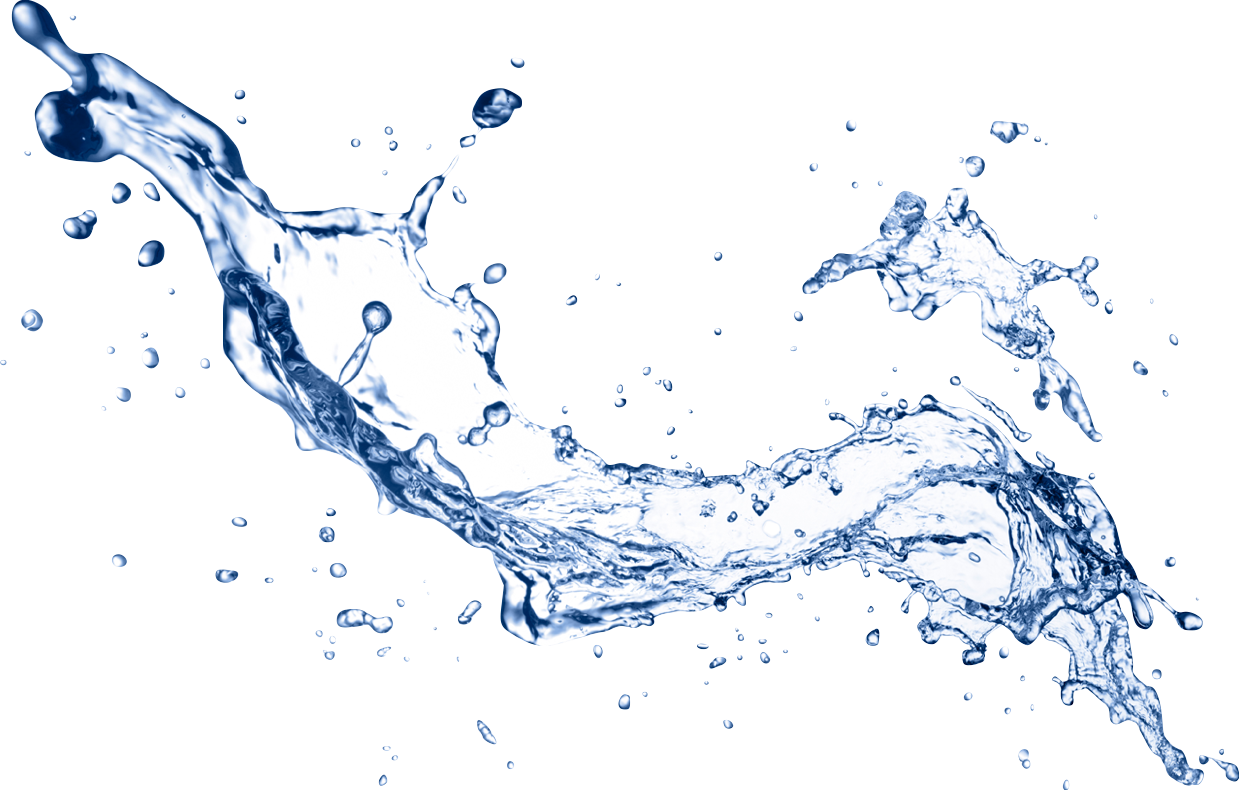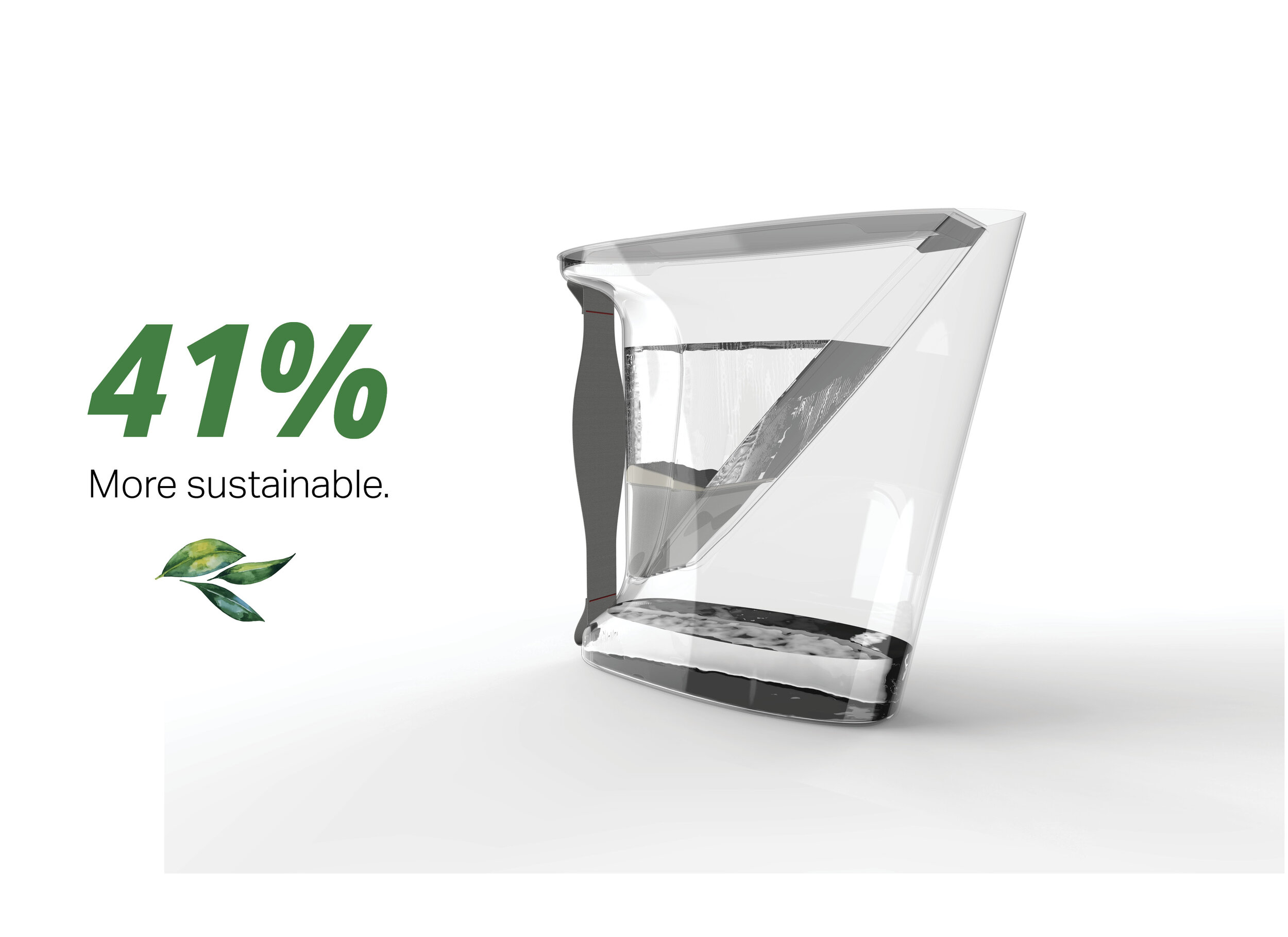
Eco Inclusive Water Pitcher
*DESIGN PROCESS
Redesign a product to optimize its sustainable while considering inclusivity as well.
Beginning Product.
Brita Soho 5 Cup Water Pitcher.
$19.99
Definite room for improvement.
After tearing down the Soho pitcher and all of its packaging, I found multiple points of opportunity.
+ I noticed multiple places where nested pieces made a redundant double-walled section.
+ That the clear body was Styrene Acrylonitrile (SAN), a non-recyclable plastic.
+ The packaging uses laminated cardboard which is nonrecyclable.
+ The handle is solid plastic so this is an opportunity to innovate the material selections.
How can we quantify and compare the sustainability of two products, before and after?
The Okala Practitioner
The Okala Practitioner is a sustainability guide that enables designers to compare and calculate the environmental impact of hundreds of materials, manufacturing and end-of-life processes directly. It does this by ranking each of the materials and processes on a scale giving it an Okala Impact Factor score that can then be compared with another similar material.

Eco Design Strategy Wheel
The Okala Practitioner’s Eco Design Strategy Wheel is an 8-step tool that helps generate ideas pertaining to sustainability by providing a prompt from which to start from. For instance, the “Reduced Distribution Impacts” category gets the designer thinking about designing to reduce shipping impact.
Tom and Betty
Tom and Betty are a middle-aged couple entering their golden years. Unfortunately, Tom is beginning to feel the effects arthritis in the joints in his hands, and Betty has Carpal Tunnel from her many years as a chief accountant, typing up spreadsheets and reports week in and week out. At their home in suburbs of Seattle, their tap water is clean, but tastes a bit like Chlorine, leading them to shop around for filtered water pitchers.
Inclusive Handles
For those who suffer from arthritis or other dexterity issues, the larger the handle, the better. This is because recruiting larger muscle groups relieves tension on the finger joints. This is an idea that I hope to explore in my final design.
Concept 1
Eliminates reservoir walls by adding a sealed edge floor and spout cover. Can be used as a mini indoor greenhouse after it has ran its course as a pitcher.
Concept 2
By insetting the handle, the perceived load of the water is lighter because the load is closer to the elbow fulcrum.
Concept 3
Using the same sealed edge floor as concept 1, this concept experiments with a hinged pivot arm to aid in pouring.
Refined Ideas
My main focuses for these refined concepts were shifting the load of the water as close to the handle as possible to perceivably lighten the load and reducing the amount of material used.
Shown to the right is my final direction.
Material Research
With the use of the Material Connexion Database, I found some promising new materials to use for the pitcher redesign that would drastically decrease the environmental impact.
Saaticare Mesh
This plastic mesh is made up of monofilament PET fibers that are precision woven and often used in medical applications like hernia meshes. This material could also potentially be made from secondary PET.
EcoPlus
EcoPlus is an additive that renders petroleum-based plastics biodegradable. This additive works by infusing oleophilic bacteria with oil-consuming microbes into plastics, significantly decreasing the time they take to degrade.
Treva Renew Engineering Bioplastic
This material is a cellulose-based bioplastic that is made up of 23% recycled plastic and 48% bio-contact. Carbon Renewal Technology allows the gases necessary for production to be made from recycled plastic rather than virgin feedstock. Otherwise non recyclable plastics can be used in the gasification process to form acetates to combine with cellulosic biomaterial.
Sustainable Packaging.



























